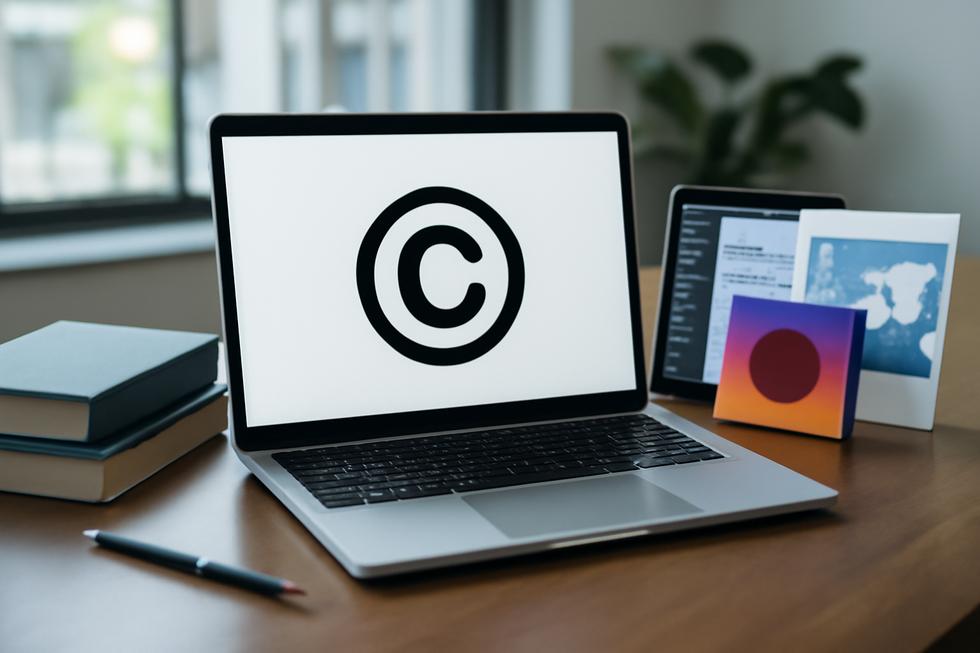Introduction
For business owners, safeguarding intellectual property is a critical component of maintaining competitive advantage and brand integrity. A copyright statement serves as a clear declaration of ownership over creative works, signaling legal rights and deterring unauthorized use. This article explores the essential components and structure of copyright statements, establishes their legal foundations, and highlights their importance in various formats and media. It also addresses the rising significance of copyright statements in digital environments and explains how embedding this information through metadata enhances protection. Finally, it examines international and practical implications for businesses operating across borders. By gaining a thorough understanding of these dimensions, business owners can better secure their creative assets and navigate the complexities of copyright protection effectively.
Tables of Contents
Chapter 1: Components and Structure of a Copyright Statement: The Fusion of Legal Clarity and Technological Integration
- Integrating Digital Embedding, Metadata, and DRM into the Modern Copyright Statement Framework
- The Economic, Geopolitical, and Societal Impact Embedded in Copyright Statement Design
Chapter 2: Legal Foundations and Significance of a Copyright Statement
- The Constitutional and Statutory Backbone of Copyright Statements
- Balancing Economic Incentives and Public Interests: The Legal and Societal Role of Copyright Statements
Chapter 3: Formats and Variations of Copyright Statements Across Media
- Adaptive Formats and Technological Integration in Copyright Statements
- Navigating Legal Complexities and Licensing Nuances in Copyright Statements Across Media
Chapter 4: Role of a Copyright Statement in Protecting Digital Media
- Integrating Technology with Copyright Statements to Safeguard Digital Works
- Economic Significance of Copyright Statements: Fueling Growth and Innovation in Digital Media
Chapter 5: Embedding Copyright Information: Metadata and Technical Aspects of a Copyright Statement
- Integrating Metadata Standards and Formats for Robust Copyright Embedding
- Innovative Digital Frameworks for Embedding Copyright Metadata and Enforcing AI-Driven Rights
Chapter 6: International and Practical Implications of Copyright Statements
- Navigating Technological and Legal Complexities in Global Copyright Statements
- Navigating Global Economies and Geopolitics Through Copyright Statements
Chapter 1: Components and Structure of a Copyright Statement: The Fusion of Legal Clarity and Technological Integration
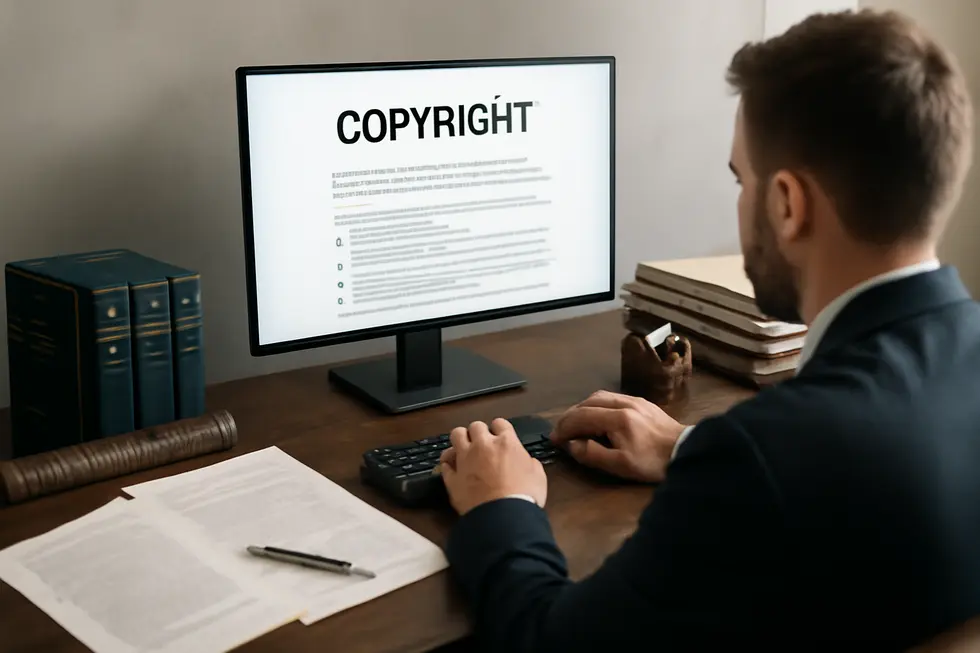
1. Integrating Digital Embedding, Metadata, and DRM into the Modern Copyright Statement Framework
The architecture of a contemporary copyright statement extends beyond the visible © symbol and text, incorporating sophisticated technological layers that secure and clarify ownership in digital environments. Embedding copyright information directly into digital files is the first critical layer. This involves invisibly or visibly inserting the copyright symbol, the year of first publication, and the owner’s name into the content itself, such as images, audio, or video files. This embedding acts as an immediate marker of rights, deterring unauthorized use while preserving attribution even if files are copied or distributed without permission.
Beyond embedding, metadata plays a pivotal role by storing comprehensive data about the copyrighted work. This includes licensing details, usage permissions, the identity of rights holders, and sometimes contact information. Metadata can be contained within the digital file or linked externally, allowing for robust organization and enforcement of rights. Advanced methods use decentralized systems leveraging blockchain technology and IPFS to create tamper-proof records of copyright ownership, timestamps, and usage histories. This is especially valuable in environments where digital content is widely shared, such as streaming platforms or AI training datasets, ensuring rights holders maintain control and clear audit trails.
Digital Rights Management (DRM) forms the next indispensable component by actively regulating content access and use. DRM tools employ secure protocols to prevent unauthorized copying, enforce geographic or temporal restrictions, and can automate licensing through smart contracts on blockchain platforms. This integration provides granular control, allowing rights to be tracked and managed at detailed levels, transforming copyright statements from static notices into dynamic, enforceable terms.
Together, the visible embedded notice, enriched metadata, and DRM mechanisms constitute an integrated copyright statement structure. This fusion adapts traditional legal assertions to the demands of digital distribution and complex usage scenarios, offering stronger protection and clearer rights management. For an in-depth example of how blockchain and IPFS facilitate decentralized copyright protection, refer to the detailed study on decentralized video protection systems. To understand the legal foundations and broader context for such copyright frameworks, exploring the copyright language for business owners can offer useful perspectives.
2. The Economic, Geopolitical, and Societal Impact Embedded in Copyright Statement Design
Copyright statements do more than declare ownership; they embody complex economic, geopolitical, and societal functions that influence how creative works are protected and shared globally. Economically, these components are essential in securing the revenue streams that creators and industries rely on. By identifying the copyright holder and relevant dates, copyright statements set clear boundaries for licensing negotiations and usage rights, such as synchronization licenses in music which involve multiple stakeholders and intricate cost structures. This clarity encourages investment in the creative economy by protecting intellectual capital and facilitating fair market exchange.
On a geopolitical level, copyright statements serve as markers within a mosaic of national laws that often vary significantly. Their structure must navigate international differences in enforcement and legal interpretation, which affect how copyrighted content crosses borders. This is pivotal in global trade where copyright can become a point of contention or cooperation among countries, especially under international agreements aiming for harmonization. Yet, localized political realities shape how these statements are crafted and recognized, impacting the global reach of creative works.
Societally, the format of copyright statements provides vital information that informs users’ understanding of rights and limitations. This transparency promotes respect for creators and guides lawful use, contributing to cultural consumption norms. Clear statements acknowledging authorship and licensing foster trust and support balanced access to creative content, including fair use provisions or permissions that enable educational and transformative uses.
The typical structure — including the © symbol, year, rights holder’s name, and occasionally additional licensing or credit details — is designed to communicate these layers simultaneously. This design ensures legal clarity, aids economic transactions, complies with geopolitical complexities, and respects societal values around intellectual property. For a detailed exploration of copyright’s economic role in business, see this copyright definition in economics and business.
Such integration of economic interests, international legal frameworks, and social expectations makes the components and structure of copyright statements a critical intersection where law, culture, and commerce converge. For further insight into the international and geopolitical challenges of copyright enforcement, the United Nations Economic Outlook and international affairs analyses offer comprehensive perspectives.
Chapter 2: Legal Foundations and Significance of a Copyright Statement
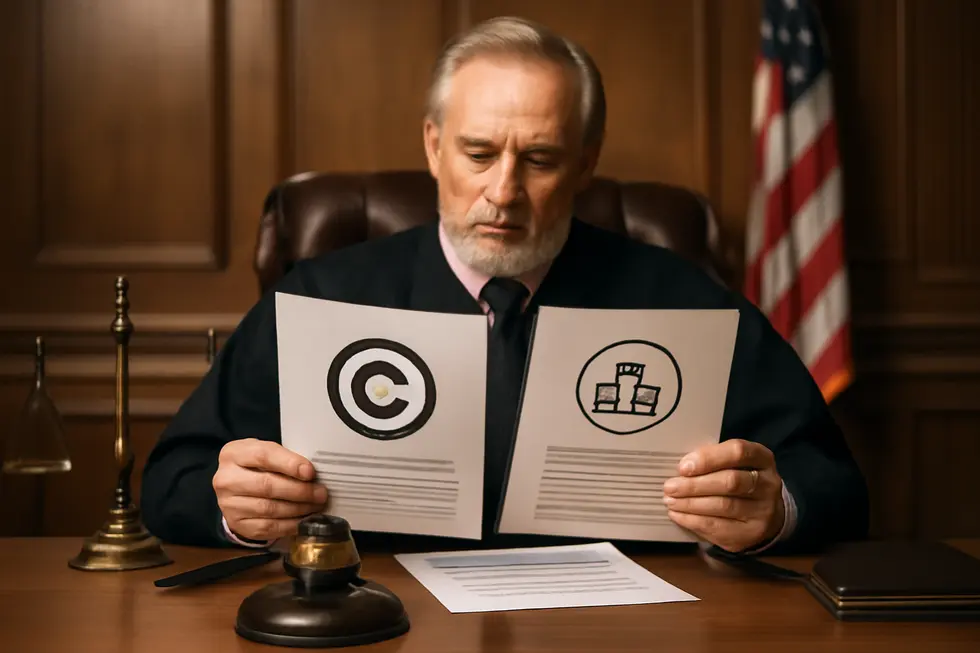
1. The Constitutional and Statutory Backbone of Copyright Statements
A copyright statement serves as a crucial assertion of ownership grounded deeply in constitutional and statutory law. In the United States, the legal foundation emerges from Article I, Section 8, Clause 8 of the U.S. Constitution. This clause empowers Congress to “promote the progress of science and useful arts” by granting authors and inventors exclusive rights to their creative works for limited periods. This constitutional mandate led directly to statutory enactments such as the Copyright Act of 1976, which comprehensively codifies the rights creators hold and defines how those rights are protected and enforced.
Statutorily, copyright grants creators exclusive, enforceable rights to reproduce, distribute, publicly perform, display, and prepare derivative works. These rights attach automatically upon the work’s creation in a tangible form, yet the presence of a copyright statement—featuring elements like the © symbol, the rights holder’s name, and the year of creation—functions as a clear public notice of ownership. Such notice has legal significance: it helps deter infringement and bolsters the rights holder’s position by providing tangible evidence in disputes or litigation.
The legal landscape is further shaped by judicial interpretations that clarify statutory language and adapt protections to evolving creative contexts. Courts examine issues like “substantial similarity” and fair use, which statutory texts do not explicitly define, ensuring that copyright law progresses alongside technological and societal shifts. This dynamic interplay between constitutional authority, legislative detail, and case law reinforces the role of the copyright statement as both a symbolic and practical safeguard.
In effect, the copyright statement is more than a formality. It firmly anchors the creator’s claims within the broader constitutional and statutory framework, signaling that their rights are protected and actionable. For creators and rights holders, understanding and properly applying this statement is a pivotal aspect of asserting and defending legal ownership. For a broader understanding of copyright claims and rights, see this detailed explanation of copyright definition for business owners.
[1] https://corpbiz.io/copyright-disclaimer
2. Balancing Economic Incentives and Public Interests: The Legal and Societal Role of Copyright Statements
Copyright statements stand as concrete embodiments of creators’ exclusive rights, granted by statutory frameworks such as the UK’s Copyright, Designs and Patents Act 1988 and the US Copyright Act. These laws provide copyright holders with a legally enforceable monopoly over their original works fixed in tangible forms, enabling them to control reproduction, distribution, adaptation, and public performance. While the copyright statement itself is not required for protection, it serves as a clear, visible assertion of ownership and the date from which rights apply, enhancing legal clarity and deterrence against unauthorized use.
This exclusivity carries profound economic implications. By controlling access and usage, creators and rights holders secure opportunities for financial return through licensing, sales, or royalties. This economic benefit fuels creative industries such as publishing, music, film, and software development, incentivizing innovation and cultural production. The limited term of protection ensures that the creator enjoys market advantages, reinforcing investment in original content while maintaining quality and integrity control over derivative uses.
Simultaneously, copyright law and its statements navigate intricate societal considerations. The law balances protecting creators’ interests with fostering public access to knowledge and culture. This harmony is maintained via statutory exceptions like fair use in the US or fair dealing in the UK, which permit limited use without permission for purposes such as research, education, criticism, and news reporting. These exceptions reflect society’s interest in promoting free expression, information dissemination, and cultural dialogue, ensuring copyright does not become an absolute barrier.
Beyond economic and societal dimensions, copyright also recognizes moral rights, safeguarding the personal and reputational connections creators have with their works. These rights protect authors against distortion or derogatory modification, emphasizing respect for the creator’s identity.
Internationally, frameworks like the Berne Convention harmonize protection standards, ensuring creators’ rights cross borders effectively. Over time, judicial interpretations continue to shape how copyright statements and laws apply in evolving technological and cultural contexts.
For a deeper exploration of economic aspects in copyright, see copyright definition and economics.
More information on legal principles can be found at the U.S. Copyright Office’s fair use page: https://www.copyright.gov/fair-use/
Chapter 3: Formats and Variations of Copyright Statements Across Media
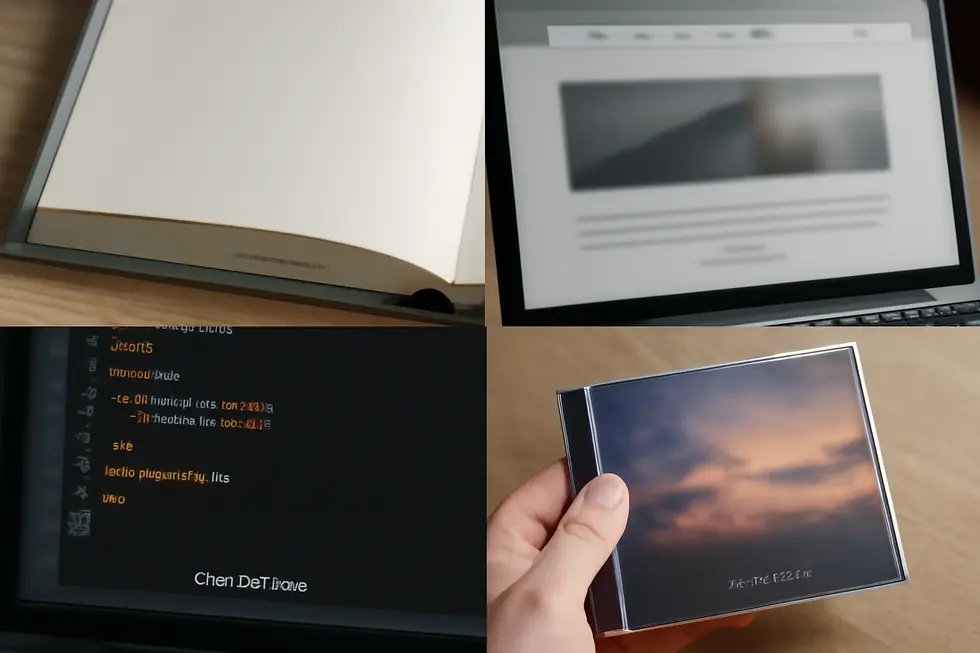
1. Adaptive Formats and Technological Integration in Copyright Statements
Copyright statements serve as essential markers of ownership, adapting in format and function as media evolve. At their core, these declarations must contain the copyright symbol or the word “Copyright,” the year of first publication or creation, and the name of the copyright holder. However, their practical presentation varies widely across traditional and modern formats to align with the characteristics of each medium.
In print media, copyright statements are typically static, clearly printed on title page versos, back covers, or front matter, ensuring physical accessibility to legal ownership information. The inclusion of dates establishes a timeline for protection, and the straightforward text such as “© 2024 Jane Smith. All rights reserved.” fulfills both notice and deterrent purposes effectively.
Transitioning to digital media, copyright statements become more dynamic and multifaceted. Websites often display these statements in footers or “About” sections, sometimes employing scripts to automatically update the displayed year range to indicate ongoing protection. Beyond visible text, digital files embed copyright data within metadata standards like IPTC for images, ID3 tags for audio, or EXIF data for photographs, ensuring that ownership information travels with the content across platforms. Licensing details, such as Creative Commons notations, can be integrated directly within metadata or in machine-readable formats (e.g., schema.org), making copyright terms both human- and machine-accessible.
Audio-visual media use integrated practices including copyright notices in opening or closing credits, and digital streaming platforms may overlay this information or embed it into metadata. Software and video games incorporate copyright statements within “About” screens and license agreements, linking legal terms tightly to user engagement.
Emerging technologies influence practical formats as well. eBooks insert copyright notices both visibly on title pages and invisibly in embedded metadata following standards like Dublin Core. DRM technologies complement but do not replace visible copyright claims. Social media platforms often feature user-generated copyright designations, while blockchain-based NFTs offer immutable timestamping of copyright claims, signaling new frontiers in technological enforcement and ownership verification.
Across these diverse formats, copyright statements maintain their fundamental role as legal notice while embracing technological integration to meet practical challenges. Such adaptation enhances enforceability, user awareness, and interoperability, reflecting a balance between traditional legal safeguards and modern content distribution methods. For a deeper understanding of how copyright applies specifically to books, see this guide to copyright information for books.
For more on copyright formats, the U.S. Copyright Office provides comprehensive resources that illuminate these evolving practices.
2. Navigating Legal Complexities and Licensing Nuances in Copyright Statements Across Media
Copyright statements serve as vital tools for asserting ownership, but their form and function shift depending on the media and legal context involved. This variation largely stems from the specific nature of creative works and the legal doctrines governing them, which together dictate how copyright is claimed, licensed, or enforced.
In literary and audiovisual media, copyright often addresses complex issues, especially with works that incorporate derivative elements or utilize existing content. Films adapting novels or documentaries featuring archival footage face layered licensing challenges. While fair use can permit limited use without explicit permission—particularly for criticism, commentary, or educational purposes—the boundaries remain context-sensitive and sometimes ambiguous. Filmmakers sometimes opt to recreate scenes rather than license short clips, highlighting strategic responses to avoid costly licensing while still managing rights.
The music industry offers a contrasting yet equally intricate landscape. Here, separate copyrights protect the composition—the melody and lyrics—and the sound recording itself. Older recordings may even fall under different legal regimes. Licensing mechanisms like compulsory licenses for cover versions reflect this division. Moreover, businesses often adopt licensing not just defensively but strategically, authorizing use of tracks by influencers or educational users while maintaining control over distribution and royalties.
Copyright statements themselves often incorporate licensing information beyond basic ownership claims. The inclusion of Creative Commons or similar licenses explicitly communicates permissible uses—whether allowing sharing, modification, or commercial use without direct permissions—thus reflecting evolving norms around accessibility and user collaboration. Digital platforms frequently embed licensing controls and education tools, fostering responsible user engagement and curbing infringement.
These distinctions illustrate the dynamic interplay between a work’s medium, the relevant legal doctrines (like the idea/expression distinction or scènes à faire), and licensing practices designed to balance creator rights with public interest. Such tailored copyright statements ensure clarity in ownership claims and usage rights, contributing to both creator protection and informed user conduct. For broader legal principles and specific case insights, authoritative guides such as the University of Michigan’s copyright basics provide foundational context.
For more insights into the multifaceted nature of copyright language in business contexts, see copyright language for business owners.
Chapter 4: Role of a Copyright Statement in Protecting Digital Media
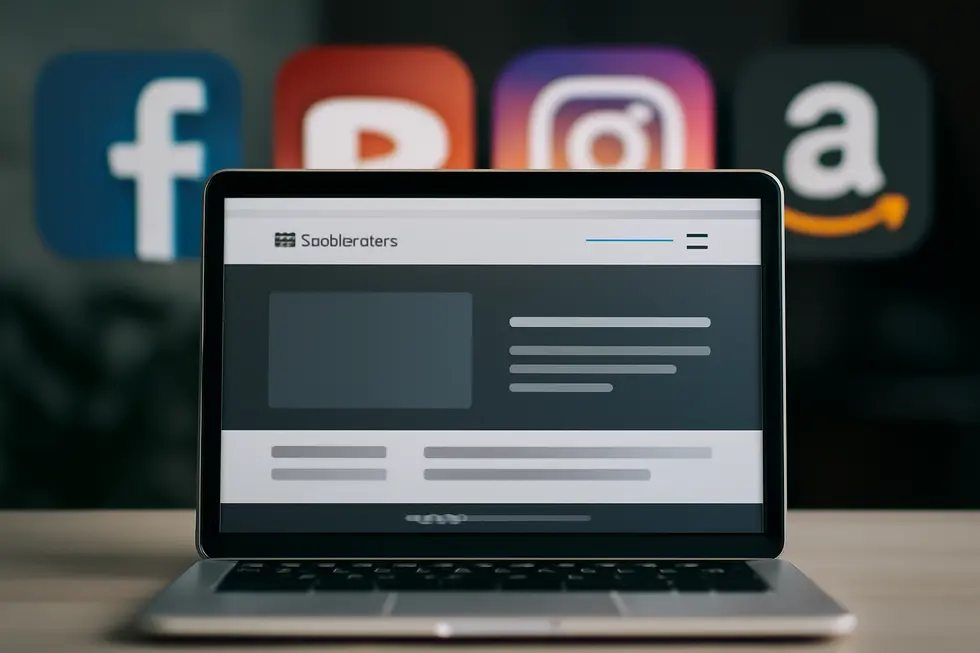
1. Integrating Technology with Copyright Statements to Safeguard Digital Works
In the digital realm, copyright statements extend beyond mere declarations of ownership—they integrate with technological solutions to protect creative works from unauthorized use. Central to this integration are Digital Rights Management (DRM) systems and Technological Protection Measures (TPMs). These technologies actively restrict copying, sharing, or alteration of digital media, effectively enforcing the rights that copyright statements assert. The legal foundation for such protections is reinforced by regulations like the Digital Millennium Copyright Act (DMCA), which criminalizes circumventing these safeguards and provides clear enforcement mechanisms.
Copyright statements often manifest not only as visible notices but also as embedded metadata within digital files. This metadata acts as an invisible marker, carrying information about ownership, usage rights, and licensing conditions. Modern platforms and automated systems rely on these markers to identify copyrighted content, discouraging misuse and facilitating rights management. In addition, embedded notices enable content tracking technologies, such as watermarking and automated content recognition, to monitor unauthorized use effectively.
The DMCA also facilitates dynamic protection through takedown procedures, allowing copyright holders to request removal of infringing content from digital platforms. This process operates within a technological framework that balances enforcement with operational efficiency, supported by “safe harbor” provisions protecting intermediaries compliant with takedown requests.
Together, these technological and legal strategies create a multifaceted shield that enhances the traditional copyright statement’s role. They adapt to the ease of copying and distribution inherent in digital media, providing creators with practical tools to assert control and protect their intellectual property. For a deeper understanding of such technological enforcement under the law, one can explore resources focusing on DMCA protections in detail.
More on technical and legal interplay in copyright protection can be found in copyright information for books.
2. Economic Significance of Copyright Statements: Fueling Growth and Innovation in Digital Media
Copyright statements serve as the economic backbone for creators and businesses engaged in digital media by securing exclusive rights to their original works. These statements explicitly assert ownership, allowing creators to control the reproduction, distribution, and licensing of their content—essential mechanisms for generating revenue and fostering a sustainable creative economy. By clearly marking legal ownership, copyright statements help maintain stable income streams from platforms that monetize social media content, advertisements, and sponsorships, encouraging continued investment in digital production.
Beyond income generation, copyright statements act as effective deterrents against unauthorized use and piracy. When digital content is copied or shared without permission, the market value of the work diminishes, directly impacting creators’ earnings and their motivation to innovate. Platforms that enforce copyright policies, responding to takedown notices and penalizing infringement, protect both economic interests and the integrity of the digital media marketplace. However, legal enforcement demands considerable resources from these platforms, including compliance costs and content monitoring, which influence the economics of hosting and distributing digital material.
Moreover, the presence of copyright protection stimulates innovation by assuring creators their work is shielded from exploitation. This assurance supports the development and diversity of digital content—a vital driver of economic growth within creative industries. Yet, this protection also raises debates about access, as stringent copyright can limit the availability of cultural resources in the public domain, balancing creator rights with societal benefit.
Copyright statements additionally contribute to establishing reputations and securing licensing deals. They reinforce a creator’s brand identity, facilitating collaborations that expand financial opportunities. Legal enforcement backed by clear copyright claims strengthens these positions, enabling more effective remedies against misuse.
Overall, copyright statements underpin critical economic structures in the digital landscape by enabling monetization, motivating creativity, imposing compliance responsibilities, and shaping content distribution environments. For a deeper understanding of legal strategies related to copyright and economic benefits, exploring copyright language for business owners provides valuable insights.
Chapter 5: Embedding Copyright Information: Metadata and Technical Aspects of a Copyright Statement
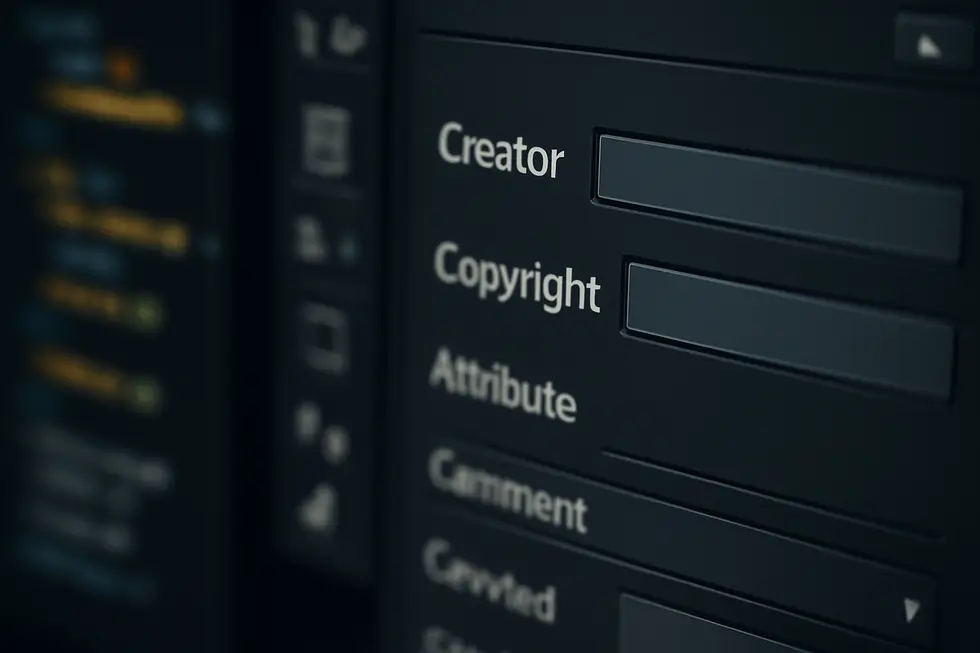
1. Integrating Metadata Standards and Formats for Robust Copyright Embedding
Embedding copyright details within digital content relies on established metadata standards that provide structured, interoperable frameworks for rights management. Among the most widely used is the Dublin Core Metadata Standard, which incorporates a flexible yet comprehensive Rights field to specify copyright dates, ownership, and permission contacts. This format’s simplicity and support for ISO-standard dates make it adaptable across various digital domains, assuring clear communication of copyright ownership.
In media-specific contexts, the IPTC Photo Metadata Standard plays an indispensable role. IPTC includes fields such as Copyright Notice, Current Copyright Owner Name, and globally unique identifiers, allowing precise attribution and streamlined enforcement. By embedding this metadata using formats like XMP, creators enhance automated rights recognition and facilitate licensing management, critical in highly visual and multimedia environments.
More recently, the Coalition for Content Provenance and Authenticity (C2PA) framework has emerged to address growing concerns around content authenticity and provenance. C2PA enables embedding of detailed rights metadata alongside creator identity while also supporting privacy controls that permit creators to limit exposure of sensitive data. Its design aligns with modern workflows that require verifiable ownership and content traceability, making it highly relevant for complex digital media ecosystems.
Technical integration of these metadata standards typically involves embedding XML, RDF, or XMP data directly into files or using linked sidecar files for formats that do not support embedded metadata. Employing controlled vocabularies and unique owner identifiers reduces ambiguity and ensures interoperability across platforms and jurisdictions. Additionally, aligning embedded metadata with legal copyright statements helps establish clear ownership and permissions, offering practical benefits in rights management and dispute resolution.
For comprehensive implementation, combining Dublin Core’s general applicability, IPTC’s media-specific precision, and C2PA’s cutting-edge provenance mechanisms creates a robust technical foundation for copyright embedding. This layered approach not only supports current legal and practical requirements but also accommodates evolving digital content distribution environments.
For further details on the IPTC Photo Metadata Standard, see https://www.iptc.org/std/photometadata/documentation/userguide/. To understand broader copyright terms in business contexts, refer to copyright language for business owners.
2. Innovative Digital Frameworks for Embedding Copyright Metadata and Enforcing AI-Driven Rights
Innovative Digital Frameworks for Embedding Copyright Metadata and Enforcing AI-Driven Rights
Embedding copyright information within digital and AI-generated content has evolved into a complex technical process essential for modern rights management. Beyond the traditional visible copyright statement, creators now rely on deep integration of detailed metadata that includes licensing terms, territorial restrictions, ownership credentials, and contact information. This metadata travels with the digital asset, whether an image, video, or dataset, ensuring persistent legal clarity as content moves across platforms and jurisdictions. This practice is especially critical in AI training datasets, where ambiguous rights tagging can lead to costly disputes.
Cutting-edge frameworks integrate blockchain technology to establish decentralized, tamper-resistant ledgers of ownership and licensing histories. While blockchain cannot physically prevent unauthorized copying, it transforms how ownership is verified and managed, enabling novel digital rights management (DRM) models such as tokenized access and controlled asset resale. These models offer creators greater control and transparency, addressing weaknesses in conventional DRM approaches.
Parallel to these methods, AI-enhanced forensic watermarking dynamically embeds imperceptible marks into content. These watermarks survive compression and cropping, enabling rights holders to trace unauthorized redistribution to individual users almost in real-time. AI further extends DRM capabilities by automating infringement detection through content scanning and risk prediction algorithms, allowing proactive enforcement and licensing management without manual intervention.
Smart contracts linked with DRM systems automate licensing terms with granular precision—such as location-specific permissions or time-bound usage—ensuring automatic compliance and unlocking new international distribution possibilities without cumbersome negotiations. These intelligent systems empower creators to enforce rights flexibly while adapting to diverse digital ecosystems.
Collectively, these advanced techniques redefine how copyright information is embedded and enforced in the digital age, bridging the gap between traditional legal frameworks and emerging AI-generated content landscapes. For those interested in the evolving role of digital rights and metadata, detailed discussions are available on copyright law and public domain information.
For further exploration of how these innovations influence digital rights protection, the Blockchain for DRM and AI Watermarking resource offers a comprehensive analysis.
Chapter 6: International and Practical Implications of Copyright Statements
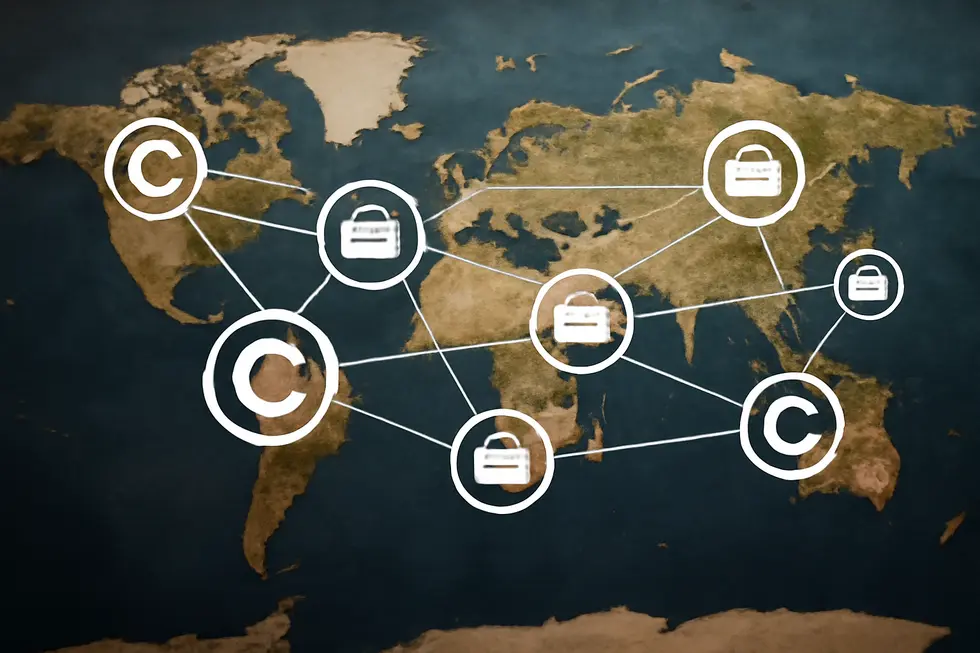
1. Navigating Technological and Legal Complexities in Global Copyright Statements
In an increasingly interconnected world, copyright statements face multifaceted technological and legal challenges that complicate their international and practical application. While copyright protection generally arises automatically upon creation, the effectiveness of a copyright statement hinges on its ability to clearly assert ownership and offer legal leverage across diverse jurisdictions. Technology, especially digital distribution platforms, adds both opportunities and obstacles. Digital content can be effortlessly copied, altered, and redistributed globally, often bypassing traditional enforcement mechanisms. Embedding copyright notices in metadata has become a crucial strategy to maintain ownership claims invisibly within files, but differing standards across file types, platforms, and countries dilute its consistency and reliability.
Legally, copyright statements function as more than mere formalities: they are pivotal in asserting rights during disputes. However, no uniform international mandate requires a specific format, leading to variations influenced by regional copyright laws. The Berne Convention, while facilitating fundamental protection without mandatory notice, leaves enforcement and proof of ownership to local law interpretations. This fragmentation means a copyright statement effective in one country might not carry the same weight elsewhere, challenging owners who distribute content globally.
Compounding these complexities are evolving licensing models, such as Creative Commons, that integrate with copyright statements to clarify permissions. Their acceptance and legal standing vary worldwide, introducing additional layers of legal nuance. Moreover, automated content identification technologies and digital rights management tools rely on accurate statements and metadata, but limitations in these technologies may fail to prevent unauthorized use fully.
Consequently, copyright holders must balance clear, consistent copyright statements with technological adaptations and awareness of jurisdictional legal frameworks. Pursuing this balance improves the likelihood that their rights are respected and enforced internationally, despite these ongoing technical and legal hurdles.
For insight into copyright language that benefits businesses, see copyright language for business owners.
2. Navigating Global Economies and Geopolitics Through Copyright Statements
Copyright statements extend far beyond simple legal notices; they represent a crucial intersection of economics, international relations, and strategic business decisions in today’s global landscape. Economically, robust copyright protection is fundamental to sustaining creative industries—sectors that contribute significantly to national GDPs and employment. By formally asserting ownership through copyright statements, creators and companies secure the financial incentives necessary to innovate and invest in new works. These protections support vast domestic revenues and export income, particularly important in an era where piracy and unauthorized use threaten these economic pillars.
On the geopolitical stage, copyright assumes a strategic role as countries and multinational firms navigate complex trade agreements and political alliances. Firms embedded in global supply chains, especially those operating across politically sensitive regions, often weigh factors beyond cost and intellectual property alone. For example, some companies prioritize alignment with national policies or diplomatic stances over traditional considerations, reflecting how geopolitical currents shape intellectual property enforcement and implementation worldwide. This dynamic intertwines legal frameworks with international policy, influencing how copyright is respected and enforced across borders.
Practically, copyright statements empower right holders to assert control and respond to infringement threats, balancing protection with the realities of digital content sharing. As digital markets expand, clear copyright declarations assist in delineating usage rights and ownership, enabling smoother commercial transactions and legal recourse internationally. The combination of economic utility, political influence, and practical application makes copyright statements instrumental in shaping the future of global intellectual property governance.
For those seeking deeper understanding of the economic role of copyright in business, exploring resources like copyright definition economics business can provide valuable insights. Additionally, the nuanced interplay between geopolitics and firm strategy around intellectual property is well illustrated in specialized academic forums such as the Stanford program on China in the global economy.
Final thoughts
A well-crafted copyright statement is more than a formality — it is a fundamental shield that asserts and clarifies ownership over your business’s creative output. Understanding its components, legal foundations, and variations across different media empowers business owners to apply copyright statements effectively and confidently. In digital spaces, this protection becomes even more critical, with metadata playing a key role in preventing misuse. Additionally, considering international and practical implications ensures your intellectual property safeguards extend beyond borders. Business owners who master copyright statements position themselves to better defend their assets, deter infringement, and maximize the value of their original works. Taking proactive steps today lays the foundation for sustainable creative and commercial success.
Your IP is the foundation of your success – let’s protect it together before it’s too late. We can’t wait to help you turn your ideas into legally secured assets.
About us
undefined
